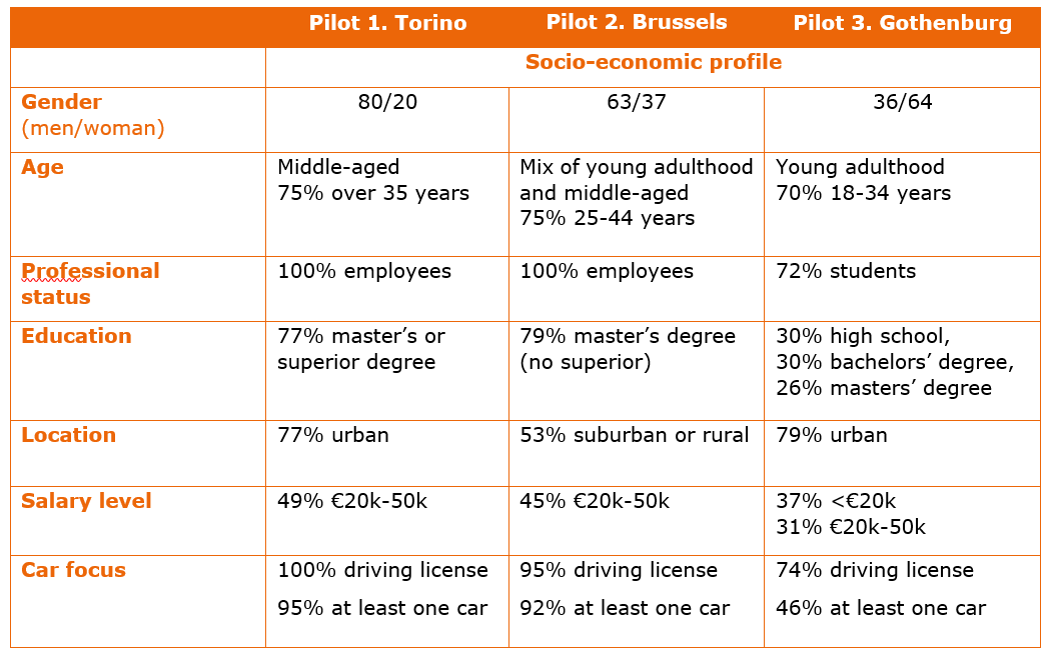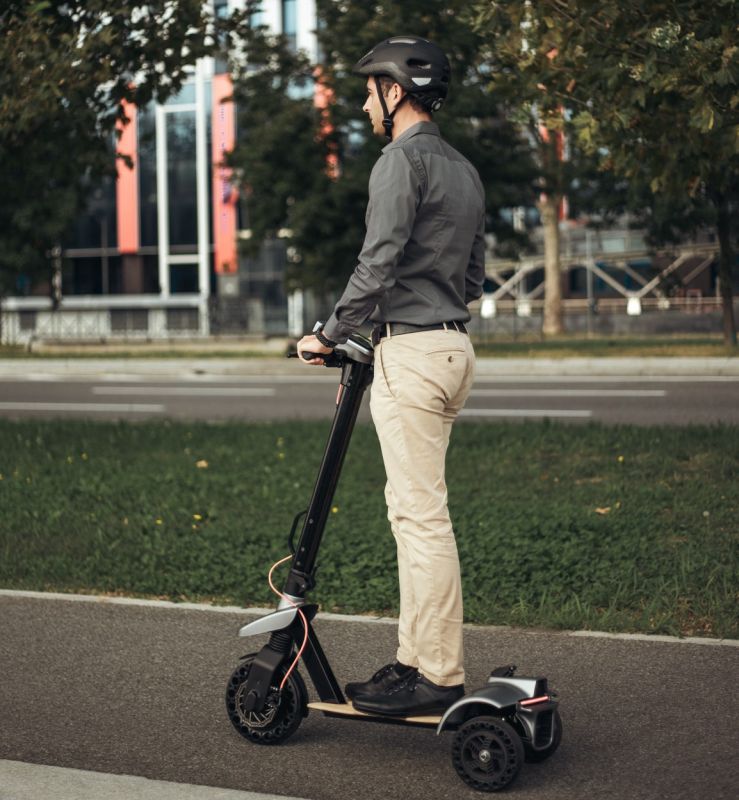The use of E-kick scooters is (still) very limited
10 Jan 22
During the last months, the preparations for the first three pilots that will kick off between March and April have kept the consortium very busy. Each pilot will test a different business plan in a different environment:
Pilot 1 (Turin, Italy): Coordinated by 5T, the agency in charge of managing ITS and mobility services in the capital of Piedmont. It targets multimodality and integration with public transport and addresses a total of 750 employees of 5T and Punch TORINO.
Pilot 2 (Brussels, Belgium): Coordinated by Tractebel, an engineering company part of the ENGIE Group. It targets corporate mobility as a part of a ‘mobility budget’ to encourage replacing company cars with other forms of greener mobility. It addresses a total of 400 employees of the transport department.
Pilot 3 (Gothenburg, Sweden): Designed in the Psychology department of the University of Gothenburg (UGOT), the pilot targets students and university staff. It targets campus mobility between faculties and buildings. A total of 11.747 students and faculty staff are part of the Faculty of Social Science.
DREEM project partner Three O’clock team has surveyed the populations from the three different pilot scenarios and defined the socio-economic profile of each one. The profiles are quite different from one pilot to the other.

The participants were also asked whether they used own E-kick scooters (EKS) or shared services in five common scenarios: to buy groceries (up to €50), to do an errand, to visit a friend (<15 km away), to commute or do work-related trips.
From a total of 391 respondents (221 from Torino, 62 from Brussels and 108 from Gothenburg), very few use EKS. The graphics below show the percentages to the total number of respondents in each city.

Regarding the use of own EKS, in the case of Torino up to 4% acknowledged to use their own EKS for errands or going to work. A 2% recognised to use it for buying groceries and visit a friend. For work-related trips just 1% uses the EKS. In Brussels, the numbers are even lower. Only 2% of the respondents affirmed they use it for buying groceries. In the other four scenarios, the EKS are not used at all. There were no users of own EKS for any category in Gothenburg.
Looking at the use of shared EKS, in Torino they are less present compared to the use of own EKS except in the case of work-related trips. There were no users of shared EKS in Brussels. In Gothenburg on the other side, their use gathered up to 4-5% of respondents in most of the categories, with only groceries-related trips being at 2%.
This results show how limited the use of EKS is, both owned and shared, in all three areas. How are these percentages expected to change after the pilots? We will keep bringing out more information in the following days. Keep tuned!
Image by "TO.TEM S.r.l."
All news

